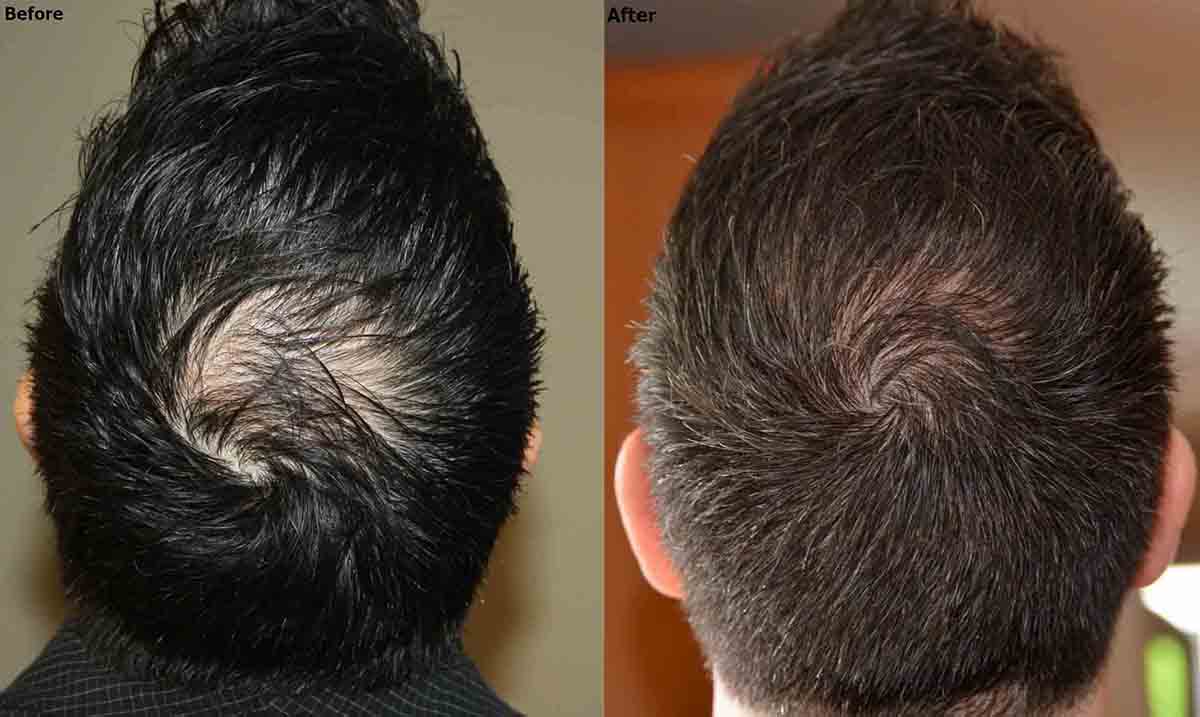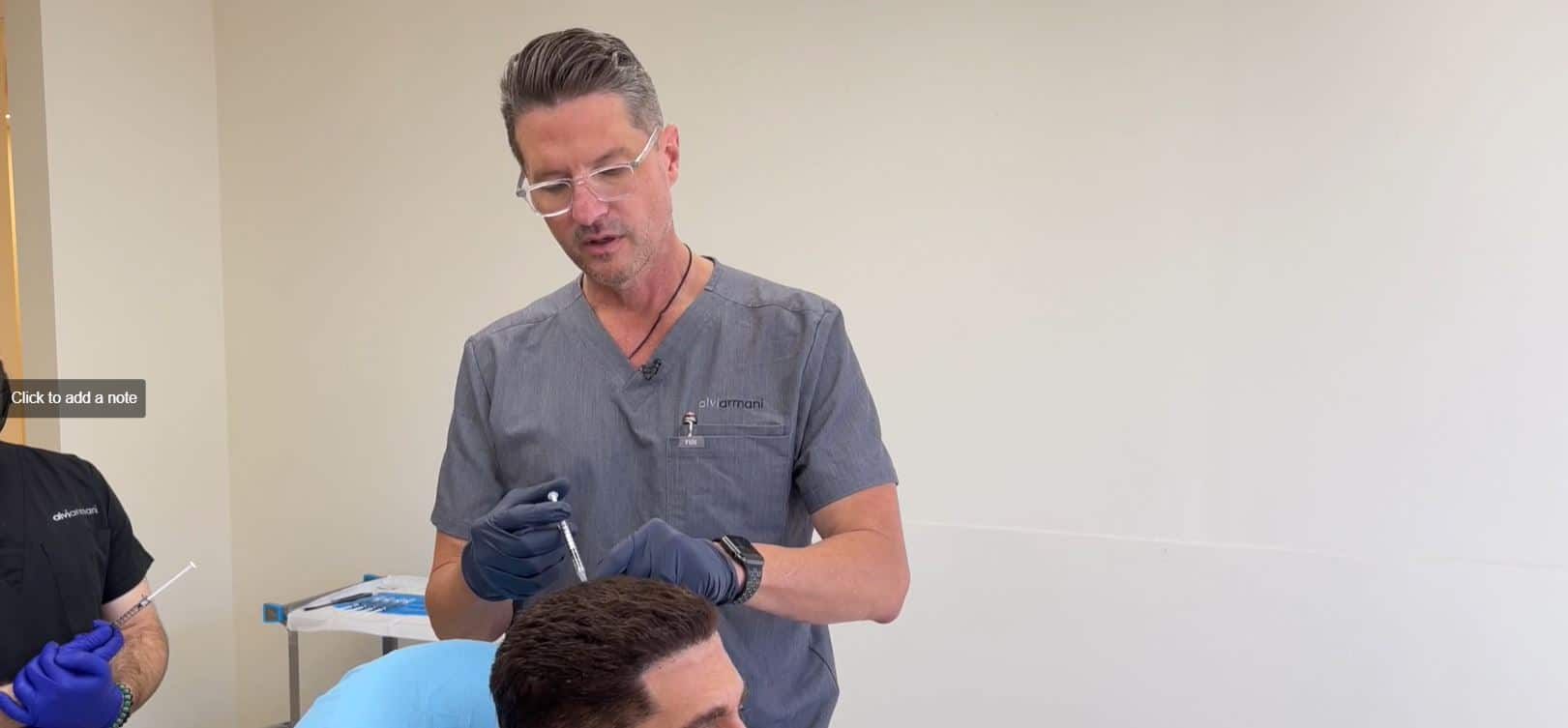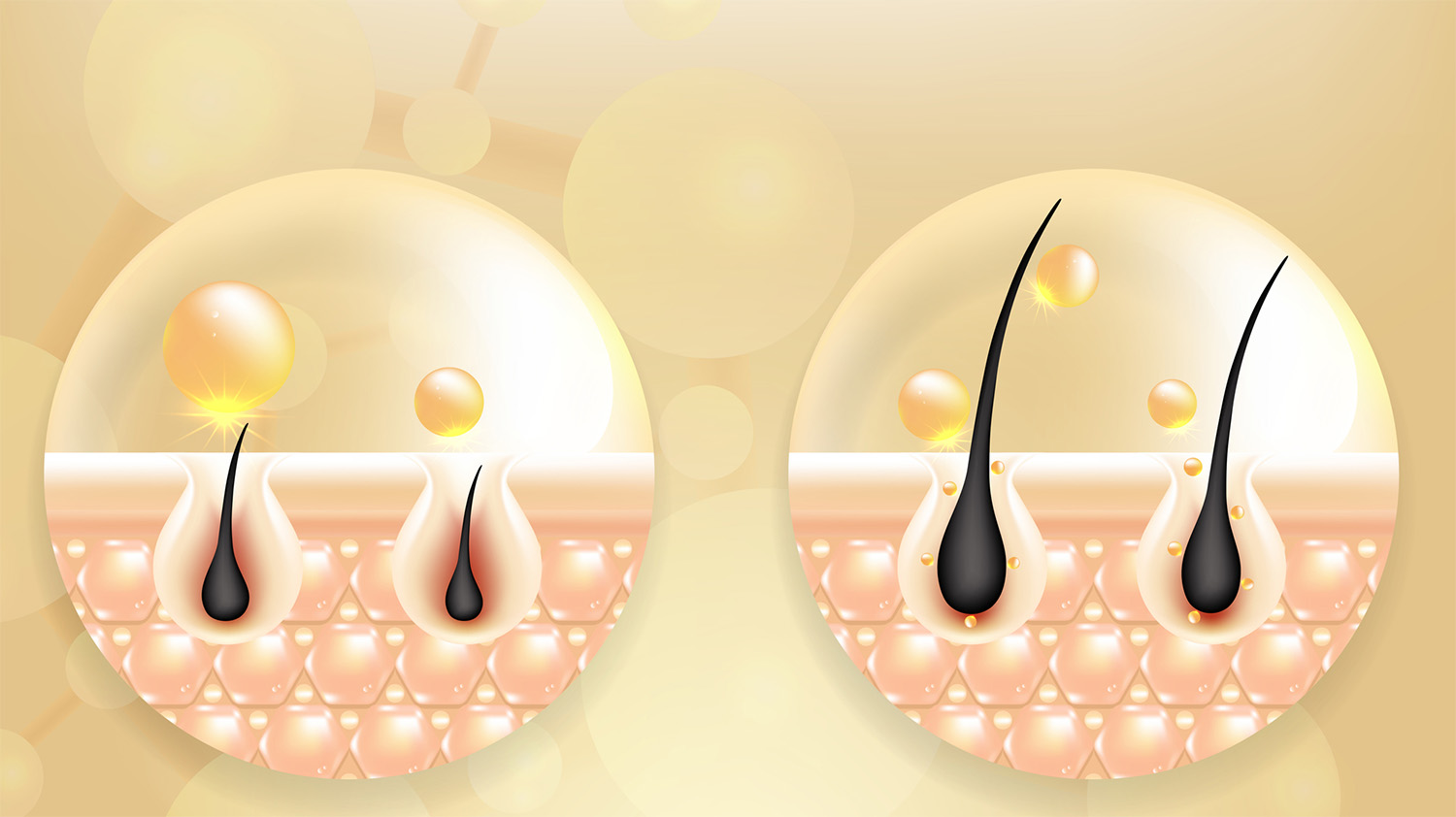One Generations Trash – Another Generations Treasure – A Literature Review Of Exosomes For Hair Loss and Hair Restoration
Introduction
The prior two decades have been exciting ones for hair loss. An avalanche of services and products have entered the hair loss market. In hair restoration, injectable options are becoming more common. Injectables tested for hair loss include PRP, Exosomes and Phytonutrients. While the hair loss research remains young, a growing body of evidence demonstrates potential future use in hair loss. Exosomes have garnered much attention in the hair loss and hair transplant world. AlviArmani has years of experience with exosomes and hair loss, leading to our advanced systems and processes to maximize the benefit while minimizing risk.
What Are Exosomes?
Previously ignored as a byproduct of biologic waste, exosomes have garnered much attention from the scientific community over the past two decades1. The physiological purpose of exosomes remains obscure; however, recent research has positioned exosomes as a major player in regulating cell-to-cell communication2,3.
These findings have spurred a growing number of studies, including active investigations into the therapeutic implications related to exosomes. These include studies in the fields of immune response and infection, cardiovascular diseases, neurodegeneration, cancer and aesthetics2,4.
Exosomes For Hair Loss
Within the world of hair science, each new year brings further studies investigating the potential role of exosomes as therapy for hair loss. Through upregulation of various mediators, multiple studies have demonstrated an exosome produced promotion of hair cycling4. Given the field's infancy, while there has been a plethora of molecular and animal studies, there remains a paucity of clinical studies.
Pilot5 and anecdotal evidence have demonstrated exosomes to have much promise both alone6 and as an adjunct to hair transplants7 in the future management of alopecia. Yet, more work is currently necessary. There is no standard related to the product's origin, isolation, purification, identification, and storage4. Further, on the clinical side, there have been no robust trials demonstrating safety and efficacy; without standardization of manufacturing, the development of dosing protocols will be challenging4.
What To Look For In Providers Offering Exosomes For Hair Loss.
Providers looking to offer exosomes to their patients for hair loss must use their best judgment as they investigate the various Non-FDA-approved products on the market. Performance indicators in terms of bang-for-the-buck are noted on each product, yet without standardization they remain difficult to compare.
On the safety and compliance side, many manufacturers are Good Manufacturing Compliant, but not certified. Side effect profiles have been promising in the body of literature, but the field remains very young.
AlviArmani Genomics Corp has removed some of the guess work by leveraging our Microscalp technology. Microscalp technology allows researchers to efficiently test various products against one another, as it pertains to their ability to promote hair growth. Using subsequent molecular studies, various pathways related to hair growth can be elucidated.
Once the product is selected, providers must select a dosing protocol based on the available literature, which is scant. Providers must then leverage anecdotal data as they fine tune their protocols. For instance, at AlviArmani we have reported 5 patients with bimodal shock loss after receiving exosomes within a defined period of time after Follicular Unit Extraction. As such, the protocols have been shifted to only provide exosomes after a predefined period of recovery post-FUE.
Conclusion On Exosomes And Use For Hair Loss and With Hair Transplant
Exosomes were previously regarded as waste and are now thought to play significant roles within cellular communication. There is much research demonstrating its promise within the future management of hair loss. Currently, further progress needs to occur in the field to allow for the standardization of products and the formation of clinical protocols. AlviArmani’s Microscalp technology provides us confidence in knowing we have the most efficacious product on the market for hair loss.
References
- Waste not, want not: how exosomes went from trash to trials. Pharmaceutical Technology. Nov 2018. https://www.pharmaceutical-technology.com /comment/exosome-trials/
- Raghu Kalluri and Valerie S. LeBleu. The biology, function, and biomedical applications of exosomes. Science. 2020.
- Bruno S et al. Mesenchymal stem cells derived microvesicles protect against acute tubular injury. J Am Soc Nephro. 2009.
- Yinghui Zhou et al Exosomes for hair growth and regeneration. Journal of Bioscience and Bioengineering. 2024.
- Sasaki, Gordon. Clinical use of extracellular vesicles in the management of male and female pattern hair loss: A preliminary retrospective institutional review board safety and efficacy study. Aesthetic Surgery Journal. 2022.
- AlviArmani Exosomes Alone- Crown Result. https://www.alviarmani.com/exosome-injection-therapy-to-treat-crown-hair-loss/
- AlviArmani with FUE result. https://www.alviarmani.com/2400-grafts-fue-exosomes/



